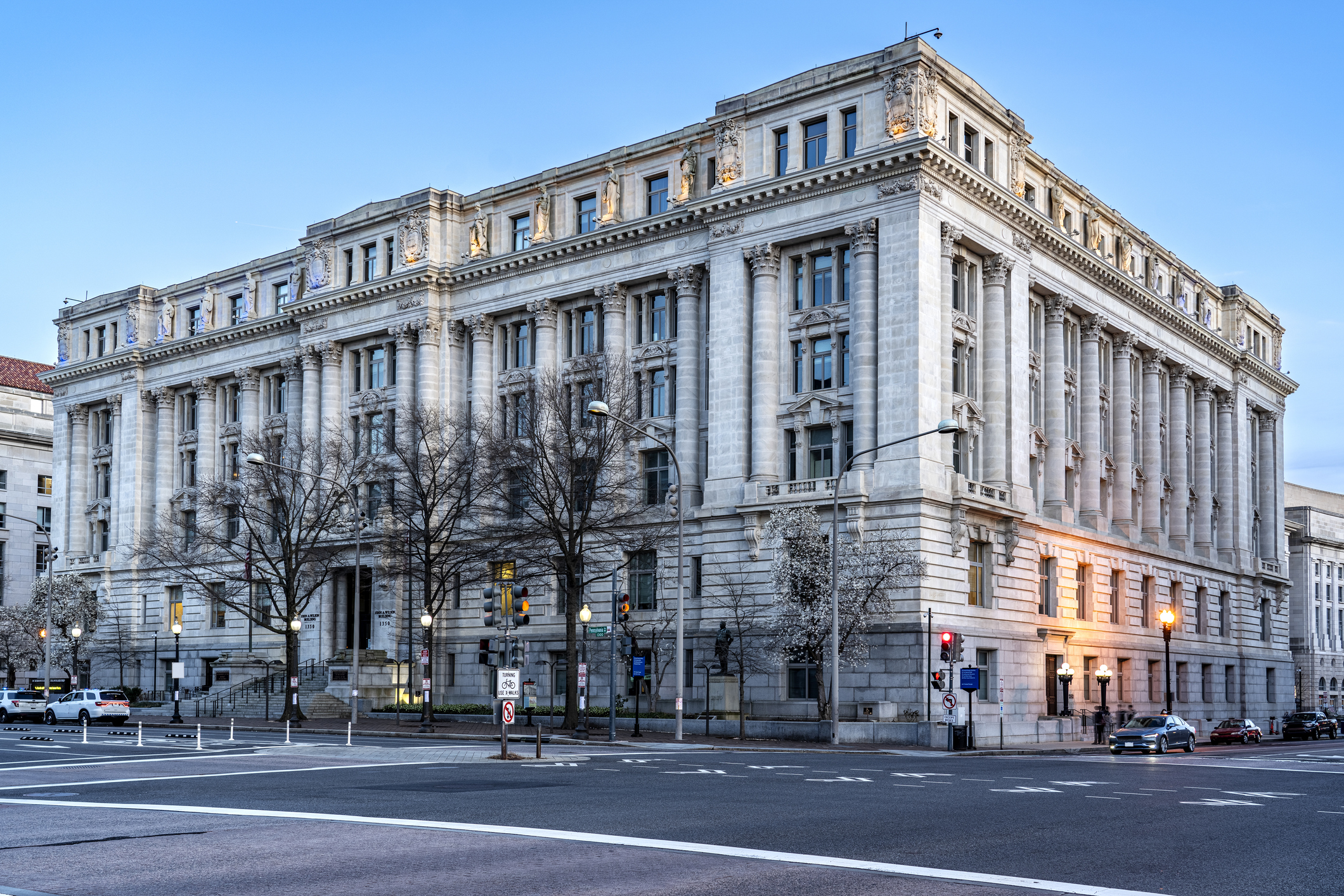New 2026 Income Tax Brackets Are Set: Will Your Rate Change?
The IRS has adjusted federal income tax brackets for the 2026 tax year to account for inflation. Here's what changes and how it could impact your wallet.


Managing your finances in a tax-efficient way requires planning and understanding of the current tax laws.
A key aspect of that planning is being aware of federal income tax brackets. These brackets dictate how much tax you’ll pay on different portions of your income and can have a significant impact on your overall tax liability.
Thankfully, the IRS just released the income tax brackets for 2026, allowing you to strategize for the upcoming tax year (returns filed in early 2027).
From just $107.88 $24.99 for Kiplinger Personal Finance
Become a smarter, better informed investor. Subscribe from just $107.88 $24.99, plus get up to 4 Special Issues

Sign up for Kiplinger’s Free Newsletters
Profit and prosper with the best of expert advice on investing, taxes, retirement, personal finance and more - straight to your e-mail.
Profit and prosper with the best of expert advice - straight to your e-mail.
Here's what you need to know.
New tax brackets 2026
Here are the inflation-adjusted tax brackets for 2026. (Note: These brackets apply to federal income tax returns typically filed in early 2027.)
It's also essential to remember that, for now, the associated tax rates remain the same (currently 10%, 12%, 22%, 24%, 32%, 35%, and 37%).
For federal tax brackets for the upcoming 2025 tax filing season, see Federal Tax Brackets and Income Tax Rates.
Also, the IRS has announced the 2026 standard deduction. For more information, see 2026 Standard Deduction Amounts Are Here.
Tax Rate | Taxable Income (Single) | Taxable Income (Married Filing Jointly) |
|---|---|---|
10% | Not over $12,400 | Not over $24,800 |
12% | Over $12,400 but not over $50,400 | Over $24,800 but not over $100,800 |
22% | Over $50,400 but not over $105,700 | Over $100,800 but not over $211,400 |
24% | Over $105,700 but not over $201,775 | Over $211,400 but not over $403,550 |
32% | Over $201,775 but not over $256,225 | Over $403,550 but not over $512,450 |
35% | Over $256,225 but not over $640,600 | Over $512,450 but not over $768,700 |
37% | Over $640,600 | Over $768,700 |
Tax Rate | Taxable Income (Married Filing Separately) | Taxable Income (Head of Household)) |
|---|---|---|
10% | Not over $12,400 | Not over $17,700 |
12% | Over $12,400 but not over $50,400 | Over $17,700 but not over $67,450 |
22% | Over $50,400 but not over $105,700 | Over $67,450 but not over $103,700 |
24% | Over $105,700 but not over $201,775 | Over $105,700 but not over $201,775 |
32% | Over $201,775 but not over $256,225 | Over $201,750 but not over $256,200 |
35% | Over $256,225 but not over $384,350 | Over $256,200 but not over $640,600 |
37% | Over $384,350 | Over $640,600 |
It's also important to note that these income tax rates are marginal, meaning they only apply to the income within the relevant tax bracket range for your filing status.
For example, just because a married couple files a joint return with $110,000 of taxable income in 2025 and their total taxable income falls within the 22% bracket for joint filers, it doesn't mean they will pay $24,200 in tax. The 22% rate isn’t applied as a flat rate on the entire $110,000.
Instead, the tax brackets are tied to marginal tax rates. This means that in 2025, for example, the first $23,850 of income is taxed at a rate of 10%. The next portion of income, between $23,851 and $96,950, is taxed at a rate of 12%. Finally, only the income exceeding $96,950 is taxed at 22%.
Note: See Kiplinger's Federal Income Tax Brackets and Rates guide for more examples and information on how tax brackets work.
IRS 2026 tax brackets vs 2025: Do tax brackets go up with inflation?
One of the tax effects of high inflation is that it impacts the tax bracket ranges. This can be seen in the "width" of the 2026 brackets, which have become comparatively wider. ("Width" refers to the difference between the lowest and highest dollar amounts in a tax bracket.)
Wider tax brackets help prevent "bracket creep." Bracket expansion reduces the likelihood of being pushed into a higher tax bracket if your income remains constant or grows slower than inflation.
What's the new 2026 standard deduction?
The IRS also announced an increase in the standard deduction for the 2026 tax year.
- The standard deduction will rise, for 2026, to $16,100 for single filers and married individuals filing separately, a $350 increase from the previous year's amount.
- The 2026 amount for those married filing jointly will be $32,200.
The increase in the standard deduction means that taxpayers who don't itemize their deductions can reduce their taxable income by a larger amount, potentially resulting in lower tax bills or larger refunds.
For your current 2025 standard deduction, see What's the Standard Deduction?
No TCJA 2025 'tax cliff' to worry about
As Kiplinger has reported, the Tax Cuts and Jobs Act of 2017 (TCJA, also sometimes known as the “Trump tax cuts”) brought significant changes to tax policy, but many key provisions came with an expiration date.
Many taxpayers wondered what would happen to their income tax brackets and rates after December 31, 2025.
Now that Republican lawmakers passed a tax and spending bill in 2025 (known by some as the "big, beautiful bill,") fears of a so-called "tax cliff" impacting key individual provisions like tax brackets and rates have been averted.
- Since President Trump signed a new tax bill into law on July 4, 2025, taxpayers are not looking at a return to higher tax rates for income levels starting in 2026.
- The current seven tax brackets, ranging from 10% to 37% remain unchanged.
As always, however, consult a qualified and trusted tax professional to see what these new brackets mean for you.
Related
Profit and prosper with the best of Kiplinger's advice on investing, taxes, retirement, personal finance and much more. Delivered daily. Enter your email in the box and click Sign Me Up.

Kelley R. Taylor is the senior tax editor at Kiplinger.com, where she breaks down federal and state tax rules and news to help readers navigate their finances with confidence. A corporate attorney and business journalist with more than 20 years of experience, Kelley has covered issues ranging from partnerships, carried interest, compensation and benefits, and tax‑exempt organizations to RMDs, capital gains taxes, and income tax brackets. Her award‑winning work has been featured in numerous national and specialty publications.
-
 This Is Why Investors Shouldn't Romanticize Bitcoin
This Is Why Investors Shouldn't Romanticize BitcoinInvestors should treat bitcoin as the high-risk asset it is. A look at the data indicates a small portfolio allocation for most investors would be the safest.
-
 I'm a Federal Benefits Pro: I Answer These 2 Questions a Lot
I'm a Federal Benefits Pro: I Answer These 2 Questions a LotMany federal employees ask about rolling a TSP into an IRA and parsing options for survivor benefits, both especially critical topics.
-
 An Income Strategy for a Volatile Market: Guide for Advisers
An Income Strategy for a Volatile Market: Guide for AdvisersAdvisers are increasingly turning to private credit such as asset-based and real estate lending for elevated yields and protection backed by tangible assets.
-
 Are You Middle-Class? Here's the Most Tax-Friendly State for Your Family
Are You Middle-Class? Here's the Most Tax-Friendly State for Your FamilyTax Tips We found the state with no income tax, low property tax bills, and exemptions on groceries and medicine.
-
 Social Security Benefits Quiz : Do You Know the IRS Tax Rules?
Social Security Benefits Quiz : Do You Know the IRS Tax Rules?Quiz Social Security benefits often come with confusing IRS tax rules that can trip up financially savvy retirees and near-retirees.
-
 New 2026 Tax Change Could Mean More for Your IRA and 401(k) Savings
New 2026 Tax Change Could Mean More for Your IRA and 401(k) SavingsRetirement Savings Here's how the new IRS inflation adjustments will increase the contribution limits for your 401(k) and IRA in the new year.
-
 Capital Gains Tax Quiz: How Well Do You Really Know IRS Investment Tax Rules?
Capital Gains Tax Quiz: How Well Do You Really Know IRS Investment Tax Rules?Quiz Take our capital gains tax quiz to test your investment taxes knowledge. Learn about loss rules, holding periods, and tax incentives that could impact your savings.
-
 3 Ways High-Income Earners Can Maximize Their Charitable Donations in 2025
3 Ways High-Income Earners Can Maximize Their Charitable Donations in 2025Tax Deductions New charitable giving tax rules will soon lower your deduction for donations to charity — here’s what you should do now.
-
 Another State Bans Capital Gains Taxes: Will More Follow in 2026?
Another State Bans Capital Gains Taxes: Will More Follow in 2026?Capital Gains A constitutional amendment blocking future taxes on realized and unrealized capital could raise interesting questions for other states.
-
 Emergency Tax Bill Ends $6,000 Senior Deduction and Tip, Overtime Tax Breaks in D.C.
Emergency Tax Bill Ends $6,000 Senior Deduction and Tip, Overtime Tax Breaks in D.C.Tax Law Here’s how state tax conformity rules could immediately raise your income tax liability.
-
 New RMD Rules: Can You Pass This Retirement Distributions Tax Quiz?
New RMD Rules: Can You Pass This Retirement Distributions Tax Quiz?Quiz Take our RMD quiz to test your retirement tax knowledge. Learn about RMD rules, IRS deadlines, and tax penalties that could shrink your savings.